The eclipse that wasn't
Apr 10, 2024 09:50:47 #
I am wondering if anyone can explain what happened with my photos of the 2024 eclipse. Here's the setup.
I was near the center of the path of totality. There were a few high, very thin clouds, but the view was pretty much clear and unobstructed for the entire time.
These pictures were taken with a Nikon D5500 with Nikon 18-55mm zoon, set to 55mm.
Focus set to infinity.
Solar filter was installed.
Exposure was manual (I think F8, 1/30 sec, ISO 800).
Pix taken every 1 minute via remote shutter release.
I also had a Nikon D5100 with a Sigma 600mm reflector lens. Same exposure settings. Solar filter installed. Pix taken every 1 minute using an intervalometer.
The D5100/600mm took decent (although overexposed!) photos. You can plainly see the eclipse progression from beginning to end of the partial.
The D5500 only took pictures of a round image - no eclipse change noted, other than position. Just a round dot.
I know that the setup should have worked because I could see a difference when I moved my hand in front of the lens (using LiveView).
I've also checked the D5500 since then to see if there was any kind of damage to the sensor - everything looks fine.
I would like to understand what happened to cause every image to be the same dot.
I was near the center of the path of totality. There were a few high, very thin clouds, but the view was pretty much clear and unobstructed for the entire time.
These pictures were taken with a Nikon D5500 with Nikon 18-55mm zoon, set to 55mm.
Focus set to infinity.
Solar filter was installed.
Exposure was manual (I think F8, 1/30 sec, ISO 800).
Pix taken every 1 minute via remote shutter release.
I also had a Nikon D5100 with a Sigma 600mm reflector lens. Same exposure settings. Solar filter installed. Pix taken every 1 minute using an intervalometer.
The D5100/600mm took decent (although overexposed!) photos. You can plainly see the eclipse progression from beginning to end of the partial.
The D5500 only took pictures of a round image - no eclipse change noted, other than position. Just a round dot.
I know that the setup should have worked because I could see a difference when I moved my hand in front of the lens (using LiveView).
I've also checked the D5500 since then to see if there was any kind of damage to the sensor - everything looks fine.
I would like to understand what happened to cause every image to be the same dot.
Early in the sequence, just before partiality began
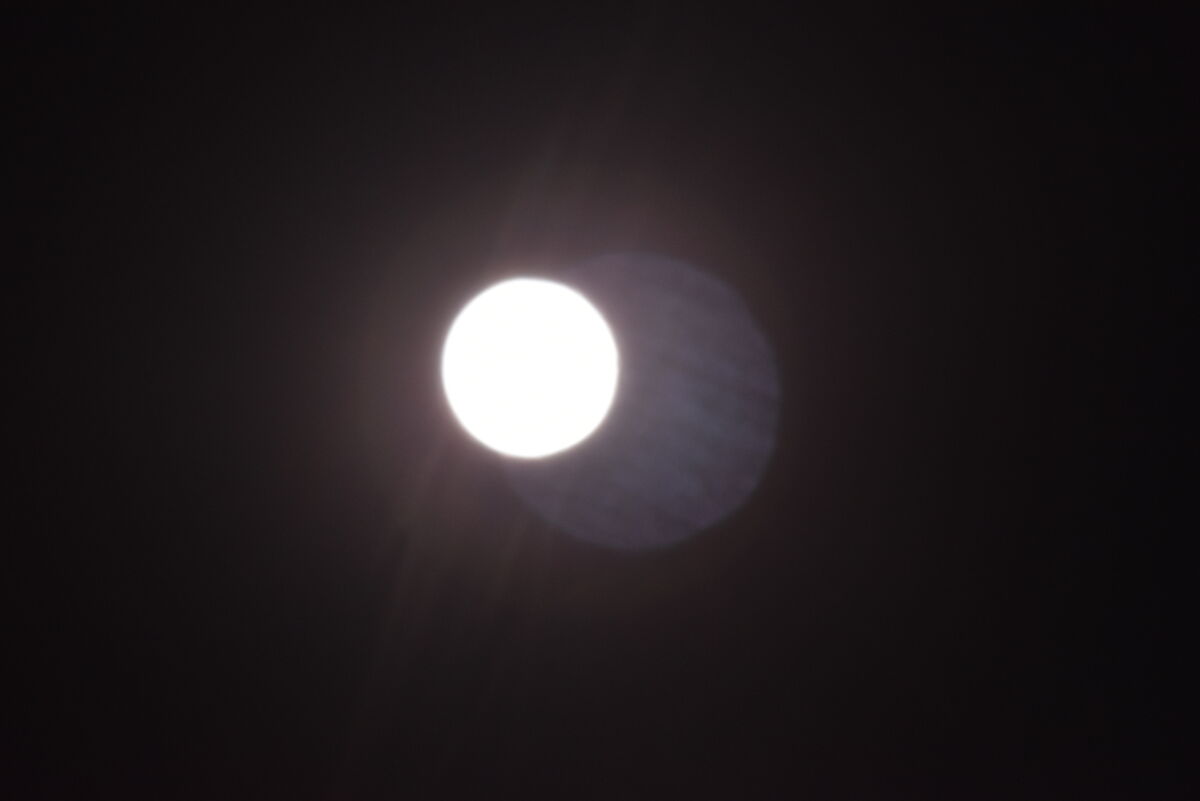
(Download)
1 minute before totality. Note the round shape - no crescent on this or any others. Totality was completely dark. Solar filter was removed for totality pix.
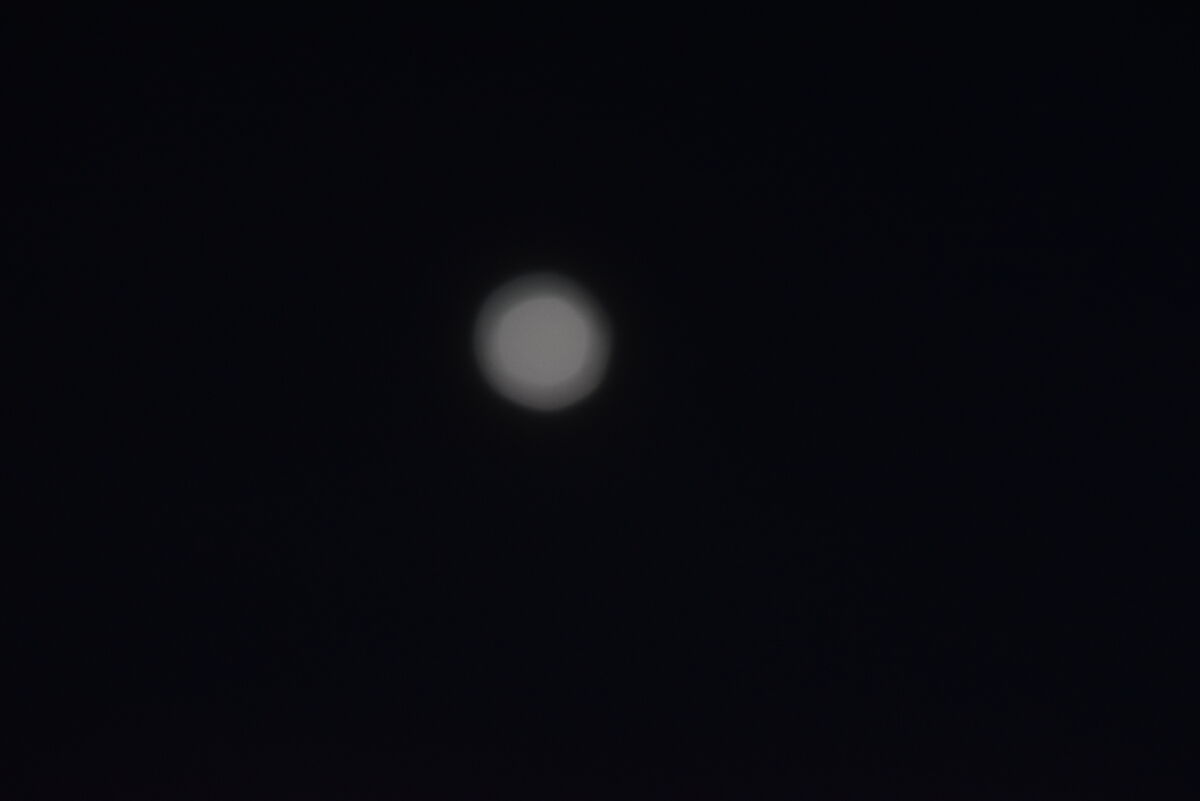
(Download)
End of eclipse
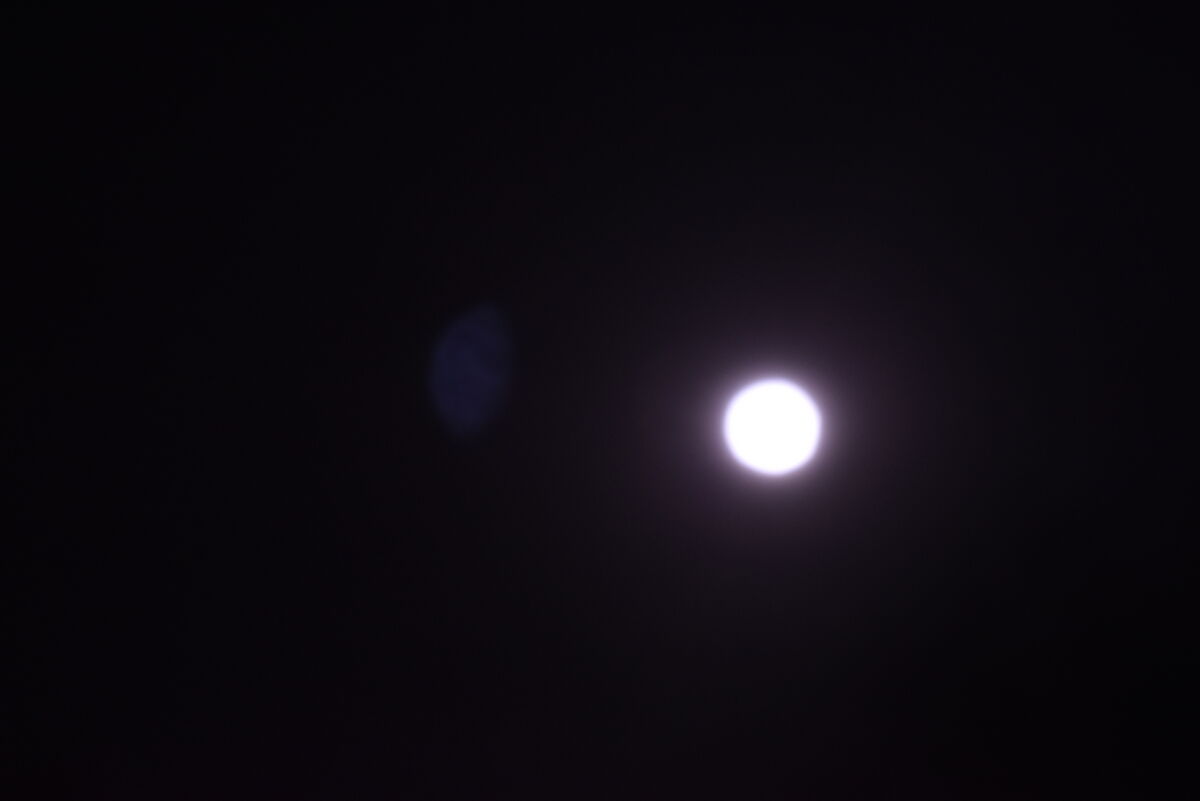
(Download)
1/2 way to totality. No "bite" out the sun. The same for 1/2 way after totality.
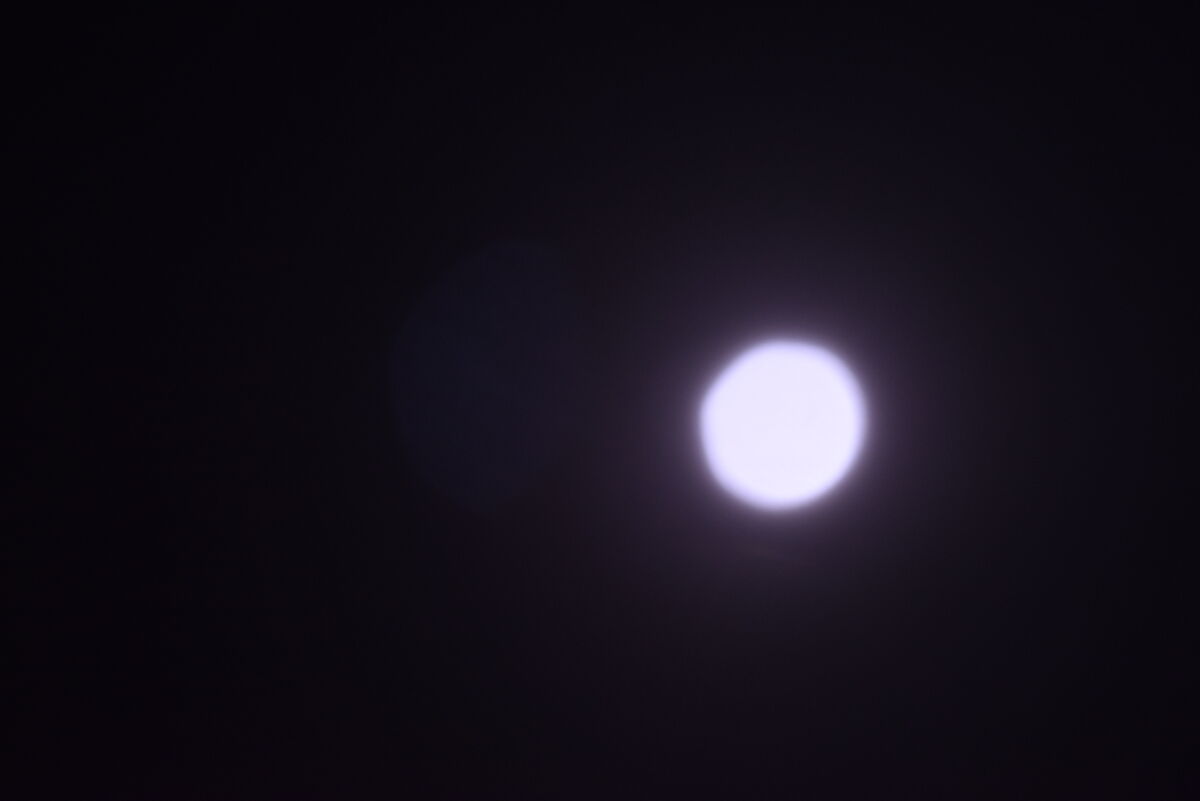
(Download)
Apr 10, 2024 09:56:30 #
Apr 10, 2024 11:07:37 #
mwsilvers
Loc: Central New Jersey
PhilS wrote:
I am wondering if anyone can explain what happened... (show quote)
I did not use my camera doing the eclipse, but I believe you are supposed to take the solar filter off during totality. I guess the very dark filter prevented you from seeing the corona.
Apr 10, 2024 11:21:56 #
I too would never photograph an eclipse. Takes skill and proper equipment to capture the splendor of a solar eclipse.
Apr 10, 2024 11:56:42 #
Apr 10, 2024 12:08:42 #
It looks to me like the photos are out of focus and overexposed. May I ask what kind of solar filter you used? Here in Nothern California, we were well out of the path of the total eclipse but did see the moon cover about 40 percent of the sun. I had to use a solar filter the entire time as the sun was never really blocked. My settings for this photo were SS 1/20, f13, ISO 100 (on a tripod) with a 100mm-400mm lens. I used a smaller aperture (f13) to hopefully get more detail of the sun.
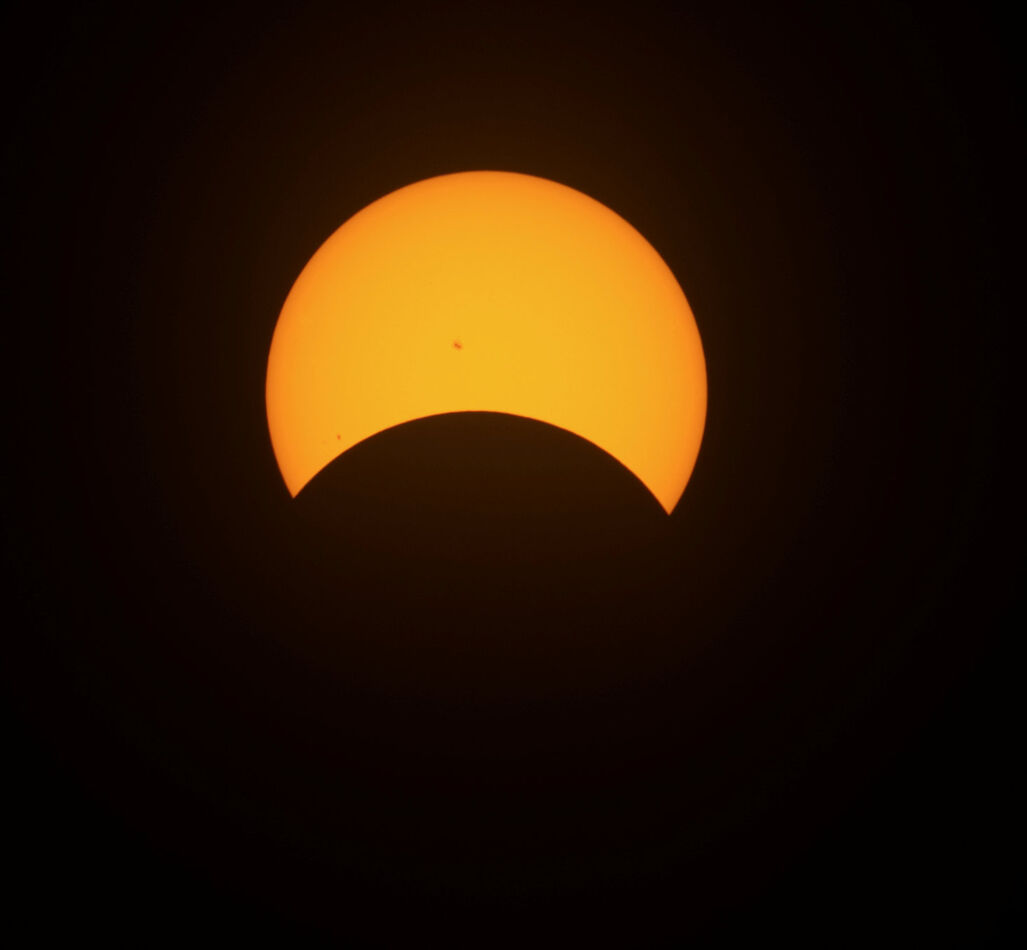
Apr 10, 2024 13:35:47 #
I agree with the others. Over exposed,SS too low, out of focus.
I used a Nikon D850. 500 mm lens. On a tripod with a gimbal. RAW. Pre-focused on distant edges with autofocus, then switched to lens and camera in M. Used live view only. As soon as it started I used the + button to zoom in on the image and further fine tune the focus on the edge of the sun using focus ring the lens.
Used a Thousand Oaks easy to remove solar filter. Took it off 40 seconds before totality. Used Gorden Telepuns Solar Eclipse App during the eclipse and his ebook to study from before hand.
Initial SS speeds were f/8, 1/200 to 1/400, ISO 100-200.
Went up to 1/1000 for DR and BB.
I used a Nikon D850. 500 mm lens. On a tripod with a gimbal. RAW. Pre-focused on distant edges with autofocus, then switched to lens and camera in M. Used live view only. As soon as it started I used the + button to zoom in on the image and further fine tune the focus on the edge of the sun using focus ring the lens.
Used a Thousand Oaks easy to remove solar filter. Took it off 40 seconds before totality. Used Gorden Telepuns Solar Eclipse App during the eclipse and his ebook to study from before hand.
Initial SS speeds were f/8, 1/200 to 1/400, ISO 100-200.
Went up to 1/1000 for DR and BB.
Apr 10, 2024 15:29:41 #
There is a lot of planning involved in Eclipse Photography and a bit of technique as in how to focus at infinity when you cannot focus by eye (you can focus on the moon and tape or mark your lens beforehand.....
Exposure with filter, easy to test before the eclipse. Exposure during totality without the filter (begin with an estimate and refine) Doing it safely and well requires lots of attention.
You have both focus and exposure issues.
Live and Learn I guess.
Exposure with filter, easy to test before the eclipse. Exposure during totality without the filter (begin with an estimate and refine) Doing it safely and well requires lots of attention.
You have both focus and exposure issues.
Live and Learn I guess.
Apr 10, 2024 16:24:49 #
Nikon D7200, lens nikkor 55-300, Settings : Manual, No filter, iso 100, EV compensation-5 Shutter speed 1/8000, F stop 22, Live picture mode , hand held
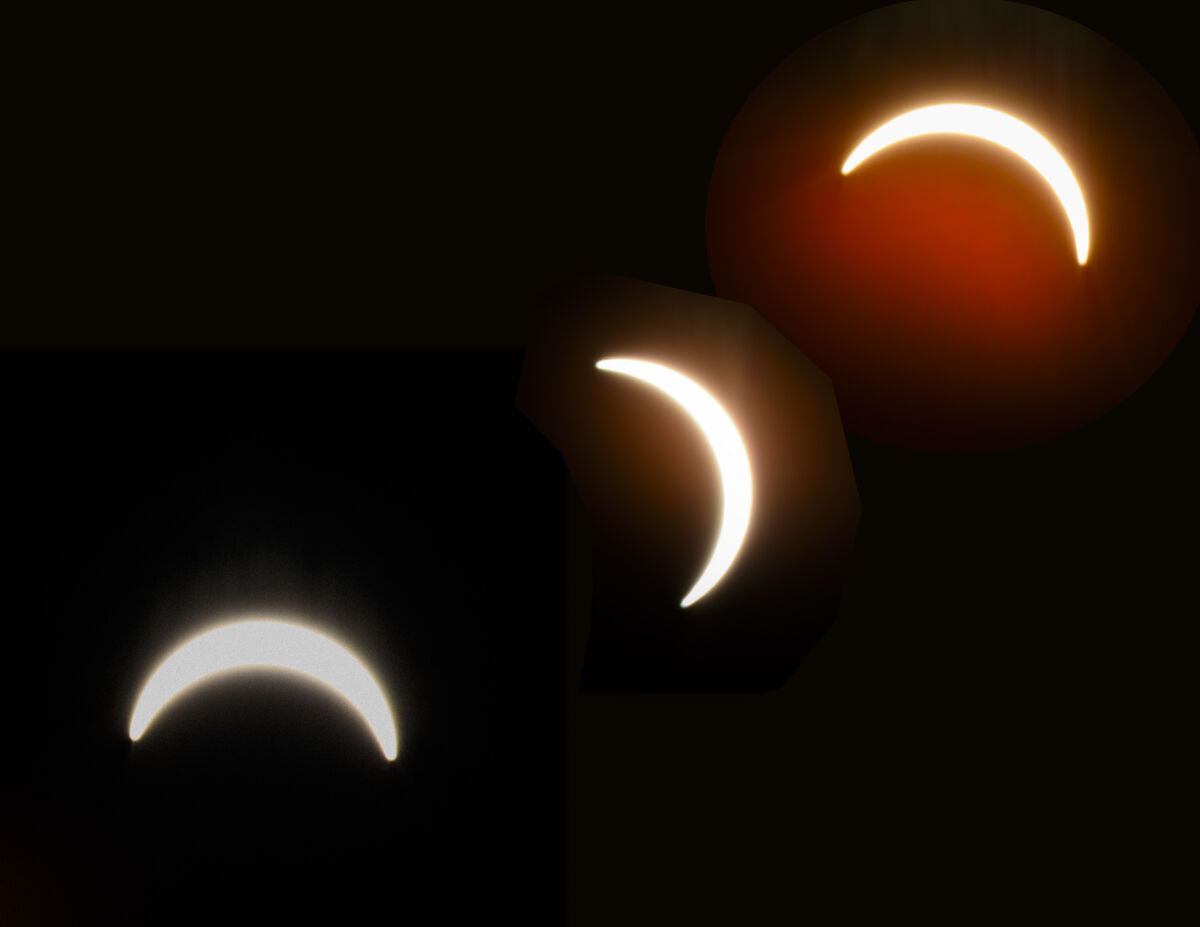
Apr 10, 2024 16:53:37 #
Apr 10, 2024 17:12:46 #
wdross
Loc: Castle Rock, Colorado
PhilS wrote:
I am wondering if anyone can explain what happened... (show quote)
This appears to be a focus problem as some of the others have mentioned. Many cameras cannot autofocus on the sun, moon, and stars without having firmware that handles it. The best way to take solar exposures is to practice before an eclipse by taking just photos of the sun. This helps to iron out many of the problems that one faces during an eclipse. Although the next US eclipse is the end of an eclipse at the Montana/Canadian border in 2044 and the California to Colorado to Florida one in 2045, there are other ones to go to. Iceland and Spain in 2026. Spain, Morocco, Egypt in 2027. And Australia and New Zealand in 2028. And there are a number of them in the 2030s including ones in Australia, Japan, and New Zealand. Practice on the sun and go to one of these. There are all worthwhile trying for.
Apr 10, 2024 18:53:35 #
1/30th I think was way too slow.
I was shooting at 1/1000th at f/8 until totallity.
I was shooting at 1/1000th at f/8 until totallity.
Apr 10, 2024 18:57:24 #
I don’t have any skill, just read a lot, watched YouTube videos, Nikon videos and practiced with the recommended equipment and settings.
Apr 10, 2024 22:23:40 #
PhilS wrote:
I am wondering if anyone can explain what happened... (show quote)
If the sun was in focus with that lens, it would be much smaller in diameter unless you cropped it severely. Did you have the auto focus turned off? If not, even though you set it to infinity, the auto focus would try to refocus.
Apr 11, 2024 06:47:22 #
Auto focus was probably left on, should have been moved to manual after "Infinity" was achieved. (Solar filter has to come off during totality.)
If you want to reply, then register here. Registration is free and your account is created instantly, so you can post right away.





